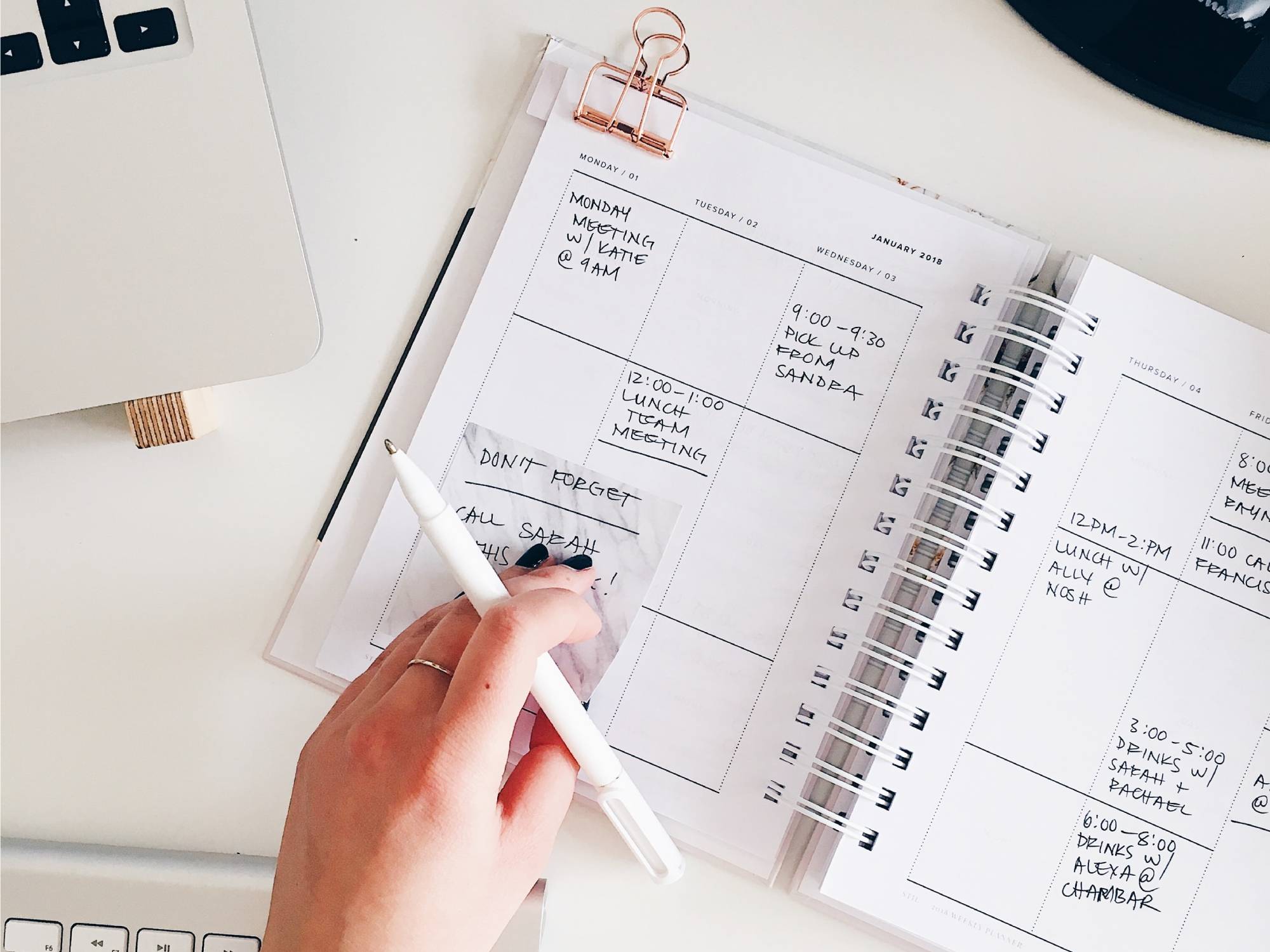

We may earn revenue from the products available on this page and participate in affiliate programs. Learn more ›
Menstruating is living in constant fear of ruining your best pair of underwear or making a spectacle of yourself the day you decide to wear white pants. And that’s only the least important reason to learn how to properly track your period.
There are a lot of apps out there that promise to make your life easier in this regard, but you may not want to rely on them. Luckily, you can learn how to track your period without an app by using the good ol’ calendar method.
Why you should track your period
Theoretically, menstrual cycles are simple—they last 28 days, start on the first day of your period, and on day 14 you ovulate.
Easy peasy, right? Think again.
Menstrual cycles are highly susceptible to changes due to illness, lifestyle, and even stress levels. Add to that the fact that each body is different and the theoretical model goes out the window.
Well, not entirely—the 28-day menstrual cycle is a good parameter to compare your own particular cycle to, and people have used it for decades to track their periods and detect any anomalies.
[Related: Fertility apps are a pain in the uterus. Here’s how to make them better.]
Research has found that what we understand as a healthy menstrual cycle varies depending on where in the world you are. In the US, a healthy cycle is anywhere between 21 and 35 days, has a period lasting usually between three and seven days, and happens monthly, with a margin of error of up to two days. Any drastic variation outside these parameters prompts a visit to the doctor, but since all bodies are different, some irregularities can be perfectly normal.
How to manually track your period
The calendar method is more than just circling a day on your calendar and then circling another 28 days later. To fully understand not only how to track your period on paper but how you can make it work for you, you first need to understand how your cycle works. It may seem like a lot, but you’ll need to trust the process.
You can divide a menstrual cycle into two parts—the pre-ovulation stage or follicular phase, and the post-ovulation stage, or luteal phase. These two episodes are separated by ovulation, the main event in every cycle where the ovary releases an egg into the fallopian tube.
In the follicular phase, the egg matures in a follicle within the ovary. Once it’s ready, estrogen levels signal to the brain that it’s time for the egg’s debut in society, and the noggin responds by releasing luteinizing hormone to trigger ovulation. The egg is now free to try and fulfill its purpose.
The empty follicle that remains in the ovary turns into the progesterone-releasing corpus luteum. This tiny structure is key to understanding your specific menstrual cycle because it’s one of the only elements in this whole process that mostly remains constant for all menstruating people. If the egg doesn’t find a companion to join it in the dance of life, the corpus luteum will die after 12 to 14 days, abruptly cutting the supply of progesterone and triggering the shedding of the uterine lining, also known as your period.
Now that you understand how the menstrual cycle works, it’s time to learn how to track your period without an app, so go ahead and write down the first day of your cycle—you can use a digital or analog calendar, your planner, or even a piece of paper. Keep in mind that the first day is when you start with full-flow bleeding—spotting doesn’t count.
Starting on the first day of your period, go back 14 days on your calendar. That’s your ovulation day—mark it down. Knowing how long it takes your body to ovulate will help you determine when you’ll be at your most fertile, a crucial piece of information that, depending on how you use it, will help you get pregnant or avoid it altogether.
Finally, jot down details about each day of your period. Take note of the amount and color of your flow, plus any other symptoms such as tender breasts, backache, headaches, mood swings, high sex drive, and low energy. Tracking symptoms throughout the rest of your cycle will eventually allow you to find patterns that will help you project ovulation, pre-menstrual syndrome, and, of course, your period.
The caveats of manually tracking your cycle
Period app developers brag about proprietary algorithms that promise to provide accuracy in all things fertility. The truth is that most of these apps use glorified versions of the calendar method, where machines try to learn from the data of millions of users to refine your results.
The problem is that when it comes to your period, the only data that matters is yours—the periods of people in Asia, Europe, the next state, or even the house around the corner from yours, don’t say much about when your next period will come.
[Related: How to make your period more eco-friendly]
This is why it’s important to spend at least five months gathering as much data about your menstrual cycle as possible before you can make any projections. The results will only be as good as the data you collect, so the more details you write down, the better.
Also, keep in mind that just like a period app can’t tell you exactly when you’re most likely to get pregnant, the calendar method won’t be able to give you a high level of accuracy either. If you’re tracking your period as a natural birth control method, know that this technique is around 77 percent effective, and you may want to complement it with other types of contraception, such as condoms, cervical mucus tracking, and basal temperature during your fertile window.
This story has been updated. It was originally published on July 6, 2022.
